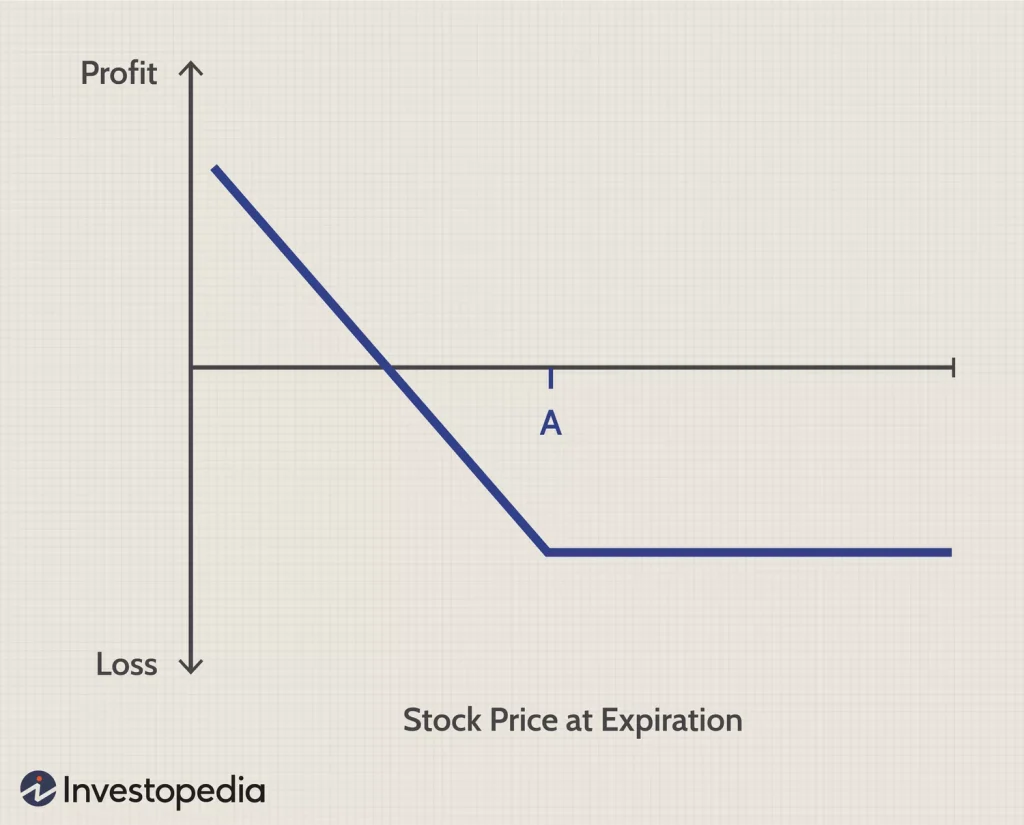What are Options?
Call Options: Right to buy an asset.

Credit: Image by Sabrina Jiang © Investopedia 2022
Put Options: Right to sell an asset.

Credit: Image by Sabrina Jiang © Investopedia 2022
Benefits of Options Trading
Key Terminology
Buying Call Options
Example:
🔹 Stock XYZ trading at $50; buy a call with a $55 strike price. If stock rises above $55 before expiration, profit potential increases significantly.
Buying Put Options
Example:
🔹 Stock ABC trading at $100; buy a put with a $95 strike price. Profit occurs if the stock drops below the strike price before expiration.
Strategy 1: Covered Calls
Example:
🔹 Own 100 shares at $40/share; sell a call option at $45 strike price. Receive premium immediately, enhancing returns regardless of moderate price movements.
Strategy 2: Cash-Secured Puts
Example:
🔹 Sell a put with a strike price of $30; stock trading currently at $32. Earn premium; if stock declines to $30, purchase at a discounted price.
Strategy 3: Vertical Spreads
Example (Bull Call Spread):
🔹 Buy call option at $50 strike, sell call option at $55 strike. Profit limited but risk clearly defined, ideal in moderately bullish markets.
Strategy 4: Iron Condors
Example:
🔹 Stock trading at $100; sell call spread at $110-$115 strikes and put spread at $90-$85 strikes. Profitable as long as stock remains between $90 and $110.
Example:
🔹 Buy call and put options both at $50 strike price. Profit if stock significantly moves up or down.
Importance of Managing Risk
Risk Management Techniques
Practical Example:
🔹 If maximum acceptable loss per trade is $200, limit the premium paid or risk per trade accordingly.
Frequent Mistakes
Solutions
Why Psychology Matters
Effective Psychological Strategies
Example 1: Covered Call Income
Example 2: Vertical Spread for Limited Risk
Congratulations! You’ve mastered simplified yet highly effective strategies to achieve consistent results in options trading. Implementing these straightforward approaches and maintaining disciplined risk management practices can help you build long-term trading confidence and consistency.
Sky Links Capital offers advanced resources, professional insights, and continuous support to enhance your trading skills further.
Take your next step today—partner with Sky Links Capital to begin your journey towards trading success!
Disclaimer: The information and tools provided by Sky Links Capital are strictly for educational and informational purposes only. They do not constitute financial advice, investment recommendations, or an offer to buy or sell any financial instruments. Users should make independent decisions based on their own research and, where appropriate, seek professional advice.
Risk Warning: Trading in any Financial Instrument is complex and carries a high risk of losing money rapidly due to leverage. It may not be suitable for all investors. Before engaging in any trading activities, you should carefully assess your investment objectives, risk tolerance, and financial situation. If necessary, seek independent financial advice before proceeding with trading.
Sky Links Holding Ltd is a prescribed holding company incorporated in the Dubai International Financial Centre (DIFC), established solely to hold equity interests in financial services subsidiaries. It does not engage in regulated activities or operational control; subsidiaries operate independently under their own regulatory frameworks. The holding company supports capital stability, strategic alignment, and shareholder value across the group.
Sky Links Capital L.L.C. has its registered office located at Offices 208, BB03, Bay Square, Business Bay, Dubai, United Arab Emirates, and is registered with the Dubai Economic Department under License Number 1385407.
Sky Links Capital L.L.C. is a company licensed and regulated by the Securities and Commodities Authority under Category 5, with license number 20200000235. The SCA regulated company, acting as an Introductory firm, in partnership with Sky Links Capital Limited and other renowned regulated entities, is authorized to facilitate services for UAE residents and nationals. Sky Links Capital L.L.C. operates strictly as an Introductory entity and is not authorized to provide investment advice, manage, or hold clients’ assets or money. All services rendered by Sky Links Capital L.L.C. are provided solely on an Introductory basis.
Sky Links Capital Limited is a Limited Company with Investment Dealer (Full Service Dealer excluding Underwriting) under License No. GB24202837 and is authorized and regulated by the Financial Services Commission (FSC) in Mauritius.
Sky Links Capital L.L.C. is a Limited Liability Corporation registered in St Vincent & The Grenadines with registration no. 3698LLC2024.
Sky Links Capital Limited may publish general market commentary from time to time. Sky Links Capital Limited and Sky Links Capital L.L.C. accept no responsibility for any use of the content presented and any consequences of that use. No representation or warranty is given as to the completeness of this information. Anyone acting on the information provided does so at their own risk. The information contained herein is not intended for distribution to residents in any country where such distribution or use would contravene any local law or regulatory requirement. Our products and services are not available to embargoed or sanctioned countries. The information is not intended for distribution to, or use by, any person in any country or jurisdiction where such distribution or use would be contrary to local law or regulation.
Office#208, BB03, Bay Square, Business Bay, Dubai, UAE
+97144957000
Premier Business Center, 10th Floor, Sterling Tower, 14 Poudrière St, Port Louis, Mauritius
+230 5 8282426
Suite 430, Beachmont Business Center, Kingstown, Saint Vincent and the Grenadines.
+784 5324533
2025 Copyright © Sky Links Capital Limited.